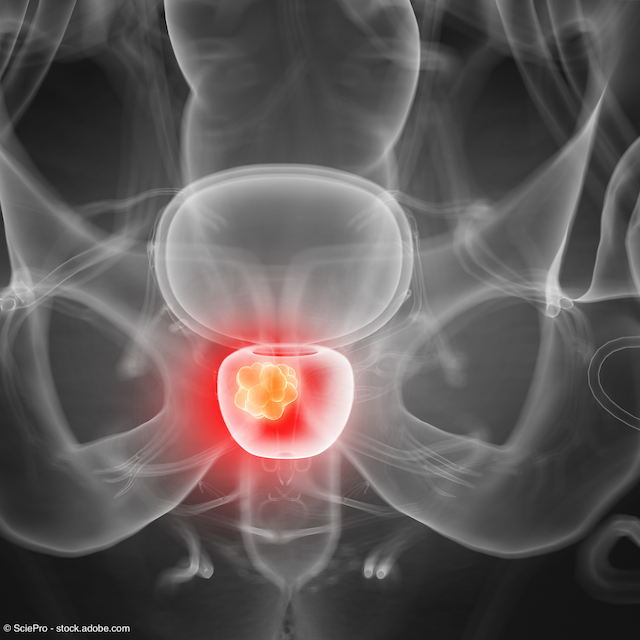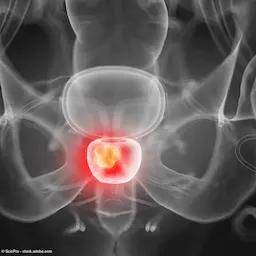Feature
Article
Wayne G. Brisbane, MD, discusses AI-assisted HIFU for prostate cancer
Author(s):
Key Takeaways
- AI-assisted Focal One robotic HIFU improves precision in prostate cancer treatment by accurately predicting tumor boundaries and minimizing damage to healthy tissue.
- Unfold AI's 3D cancer mapping, validated through extensive surgical pathology, aids in selecting suitable candidates for focal therapy, enhancing patient outcomes.
"I think it's a really nice synergy between the 2 technologies," says Wayne G. Brisbane, MD.
Wayne G. Brisbane, MD

EDAP TMS SA and Avenda Health recently announced the launch of artificial intelligence (AI)-assisted Focal One robotic high-intensity focused ultrasound (HIFU).1 In this interview, Wayne G. Brisbane, MD, discusses the combination of the 2 technologies and how it could improve patient care. Brisbane is an assistant professor of urology at the University of California, Los Angeles.
How does Unfold AI's 3D patient-specific cancer maps enhance the accuracy and precision of Focal One robotic HIFU procedures?
Focal therapy, specifically with Focal One, has been a good energy for delivering focal therapy for a long period of time. This is an iterative generation of that device, so it's very good at delivering the energy and killing tumors. But 1 of the limitations of focal therapy—and it is one of the newer styles of prostate cancer treatment—has been the inability to accurately predict exactly the extent of tumor, and that's a multi-pronged problem. Conventional imaging tends to underestimate the extent of cancer. MRI in particular, can only see kind of the nucleus of the cancer. I always think of it as a crab; you see the body of the crab, and there are these legs that are projecting outward. And so it's difficult to know exactly where the extent of tumor is. Once you know that, you can go ahead and kill it. But that's tricky. This AI map was designed specifically to solve that problem. It inputs MRI, PSA, age, and then, very importantly, Gleason score and biopsy core location, cancer core location, and takes on all this information and generates a 3-dimensional map, and you can overlay that map onto the robotic HIFU device. And then the machine's really doing everything for you. They're predicting the extent of the tumor, and then you press "go," and they're killing the tumor. It takes a lot of the variability out of this, and so we're hopeful that this will improve the consistent oncologic control that focal therapy is able to achieve. We know that it does seem to do very well as far as side effects, but we need some very consistent oncologic control, and we're hopeful this kind of marriage between the 2 will be good.
What sorts of technical challenges had to be overcome to seamlessly integrate Unfold AI with the Focal One platform?
The integration between the robotic HIFU machine and the Unfold AI map was actually the easiest of all the challenges. Once you get one of these maps, you basically make a 3-dimensional volume of your ultrasound, and then you press a button to import this map. And then you do a fusion algorithm that's very similar to what you would do for a fusion biopsy. This is very, very familiar to many urologists. And then after that, the 3-dimensional map is there, and you can choose to follow it or not. That part is actually probably 1 of the easiest things. I think the biggest technical challenge is getting Unfold AI into the institution and getting it up and running. It's a brand-new technology, and anytime you bring a brand-new technology to a large academic institution—[or] any institution—that was the more challenging bit. But honestly, the team, both at EDAP, who runs the robotic HIFU Focal One, and Avenda Health, who do Unfold AI, have been pretty helpful getting it up and going. Once we got the 2 programs running, they seamlessly went together quite nicely.
How does the AI algorithm in Unfold AI ensure that it accurately identifies tumor boundaries while minimizing the risk of damaging healthy tissue?
The AI algorithm was designed to predict tumor extent. That's how it was validated. It was designed on prostate biopsy inputs, so MRI prostate biopsy locations, cancer core locations, stuff like that, and that's what trained the AI. It was actually several thousand patients and tens of thousands of individual cores across multiple institutions to actually generate the algorithm, and then it was validated on surgical pathology. These were patients where we actually took their prostates out. They didn't get focal therapy, and so we had the ground truth. We sectioned those prostates, and we looked at the Unfold AI map compared to what the prediction was, and that's how we validated it. It was actually quite good. This was documented in several publications, one by Priester in European Urology Open Science.2 Another was published in The Journal of Urology;3 it was a reader study. And then another paper was just published in BJUI Compass that was looking at extraprostatic extension.4 So there have been several validation cohorts in the surgical cohort, both here at UCLA and at Stanford, under Geoffrey Sonn's direction. I believe NYU is also [working on] some validation as well. So it's been very extensively validated in the surgical cohort, which I do think is a very good cohort for validation. And now, going forward, we are able to, with, I think, reasonable confidence, decide that the AI will encapsulate the tumor margin. We also have shown that it will predict extracapsular extension, which those patients probably are not good focal therapy candidates. And then we have some work that I just sent back to the reviewers, so hopefully, very soon, it will be published, showing that the extent of the tumor volume is also a predictor of how patients will fare with focal therapy, and, not surprisingly, smaller tumors seem to be better for focal therapy. I don't think that that's a surprise to anyone, but we've quantified which volumes are better for focal therapy and which ones are not, and then we're hopeful that this can be kind of a decision algorithm, so patients can get it before deciding on their treatment, because most men would be interested in focal therapy. The decrease in damaging healthy tissue usually translates into decreased side effects, and men are very interested in that. But not all men are good candidates for that, and we have to make sure that if you're going to get treatment, we do a good job. And so the oncologic control still is a primary concern. Hopefully, we can use these AI algorithms to [determine] who is a good candidate. For those patients who are good candidates, they can get focal therapy under AI guidance, and for those patients who are poor candidates, we can use the features with extracapsular extension maybe to guide surgery and do nerve sparing. And then we have some partnerships looking at guiding radiation boosting so we could treat the entire prostate, but also boost the area with the cancer using radiation. I think that the hope is that this will be a nice way to predict tumor volumes accurately, and in doing so, select the appropriate patients for the appropriate therapy, and within those therapies, give better guidance.
Based on the initial data from this, what are the expected improvements in patient outcomes and quality of life doing this AI-assisted Focal One procedure?
I think [focal therapy] is a great effort at de-escalation of care. One of the initial forays into it was active surveillance and saying, "Do we need to treat everyone?" And now we've done active surveillance for a while and found excellent results. But there are patients who are in the bridge between active surveillance and surgery/radiation, and focal therapy may be a good fit for them. The first part is accurately selecting who those patients are. Focal therapy has been very focused on traditional metrics of risk stratification: PSA, grade group, local staging. But focal therapy is more complex than just that, because those risk criteria are applied to the whole prostate. Focal therapy is looking at only ablating a subsection of the prostate, so it's actually much more technically complex [in terms of] decision-making and [performing the] procedure, because you're kind of betting that you actually know where the tumor is. It's very easy to fail if you don't have the right guidance. This will help with both selecting the appropriate patients and then guiding those treatments, so that we can be a little bit better assured that we're doing a good job.
How would say that the personalized treatment planning that is enabled by Unfold AI compare with just, you know, the traditional methods of prostate cancer treatment?
Traditionally, we've treated the entire prostate with either surgery or radiation. That has some benefits. Prostate cancer tends to be multifocal, so there can be tumors that pop up in multiple places, and it also tends to have genetic precursors. Erickson had a very nice paper in Nature in 2022 showing that even normal tissue has the genetic precursors for cancer development.5
When I'm explaining it in the clinic, I explain it like a moldy piece of toast. [Let's say] you have a piece of toast and you clip off the moldy bit in the corner, and you lose your appetite, so you put it back in the bag. When you bring it out a little bit later, you wouldn't be surprised that there were other little mold bits. They were small initially, but they could come back. We think that prostate cancer biology may act somewhat like that.
For a long time, surgery and radiation have both removed the primary tumor that we knew about and the potential for other tumors. However—and this is a very important caveat—we have traditionally over treated prostate cancer. That's not a hard statement to make. We have multiple iterations of long-term, high-quality clinical trials that have demonstrated over treatment of prostate cancer. That's been the impetus for things like active surveillance. We do think that trying to de-escalate care, where we're trying to only treat the lay areas with prostate cancer, that is at least very interesting and deserves further clinical trials. That's the idea behind this genesis of focal therapy, and I think it's definitely worth looking into. Focal therapy is making a pretty big bet that you can outline those tumors effectively. Prostate cancers do not follow a linear expansion, meaning they don't grow like little marbles. They grow in all different directions. They're very difficult to visualize. And then you also have these areas directly adjacent to them, and maybe even farther than directly adjacent that have the predisposition to cancer. [This means that] doing focal therapy well, is a very complex scenario, and so it's very easy to fail, and then we also have to decide, what is failure? Is the cancer coming back a failure? Is salvage therapy a failure? There are several questions in the focal therapy arena left to answer, but we do think that the accurate designation of tumor volume is a considerable step forward, because we really didn't have this up to this point.
Is there anything you would like to add?
I think it's a really nice synergy between the 2 technologies. I was very pleased to see both companies get together. It's one of those things where it makes sense intuitively; everyone is excited to deliver better patient care, and these companies need to be congratulated in that they are both pursuing excellence and improving patient care, but also funding clinical trials. They're putting money into developing the technology and making sure that it works, so that patients can get consistent and proven results. I'm very proud of being a very small part of it.
REFERENCES
1. EDAP and Avenda Health launch world’s first AI-assisted Focal One® robotic HIFU procedures. News release. EDAP TMS SA. September 19, 2024. Accessed October 3, 2024. https://investor.edap-tms.com/news-releases/news-release-details/edap-and-avenda-health-launch-worlds-first-ai-assisted-focal
2. Priester A, Fan RE, Shubert J, et al.Prediction and mapping of intraprostatic tumor extent with artificial intelligence. Eur Urol Open Sci. 2023;54:20-27. doi:10.1016/j.euros.2023.05.018
3. Mota SM, Priester A, Shubert J, et al. Artificial intelligence improves the ability of physicians to identify prostate cancer extent. J Urol. 2024;212(1):52-62. doi:10.1097/JU.0000000000003960
4. Priester A, Mota SM, Grunden KP, et al. Extracapsular extension risk assessment using an artificial intelligence prostate cancer mapping algorithm. BJUI Compass. Published online August 26, 2024. Accessed October 3, 2024. https://bjui-journals.onlinelibrary.wiley.com/doi/10.1002/bco2.421
5. Erickson A, He M, Berglund E, et al. Spatially resolved clonal copy number alterations in benign and malignant tissue. Nature. 2022;608(7922):360-367. doi:10.1038/s41586-022-05023-2
Newsletter
Stay current with the latest urology news and practice-changing insights — sign up now for the essential updates every urologist needs.
















